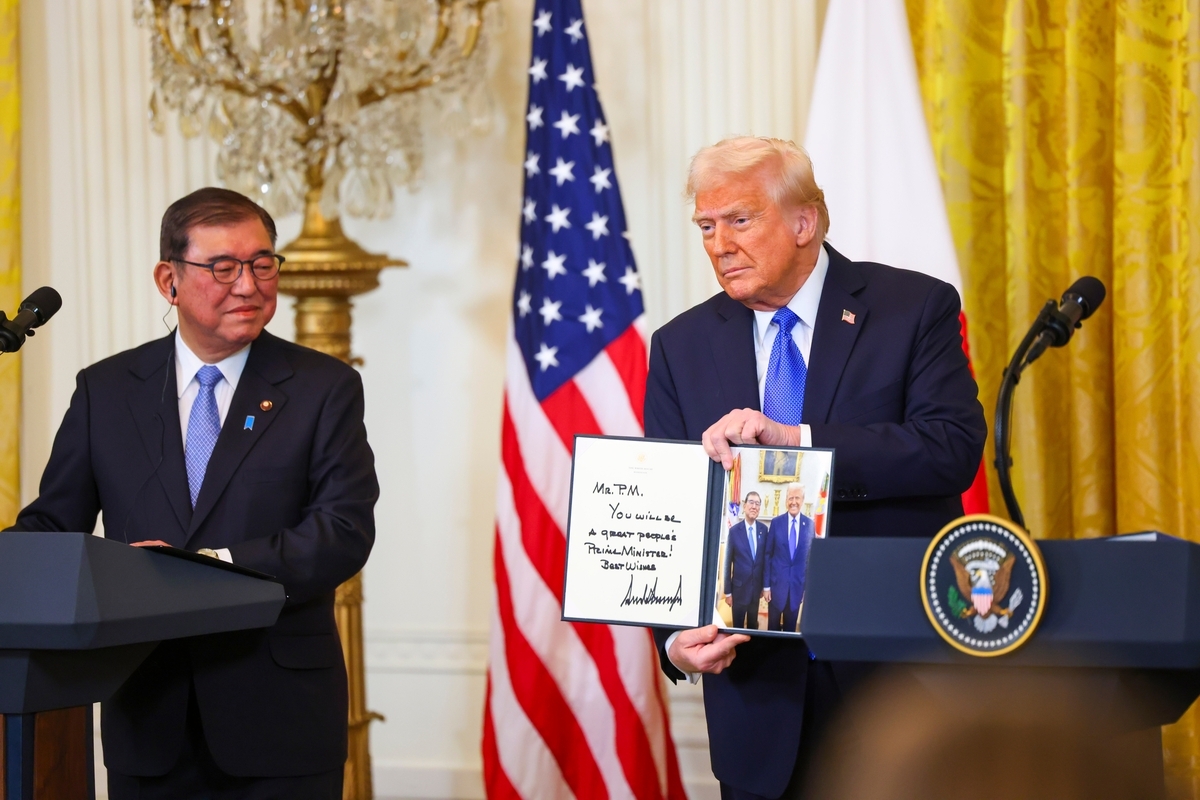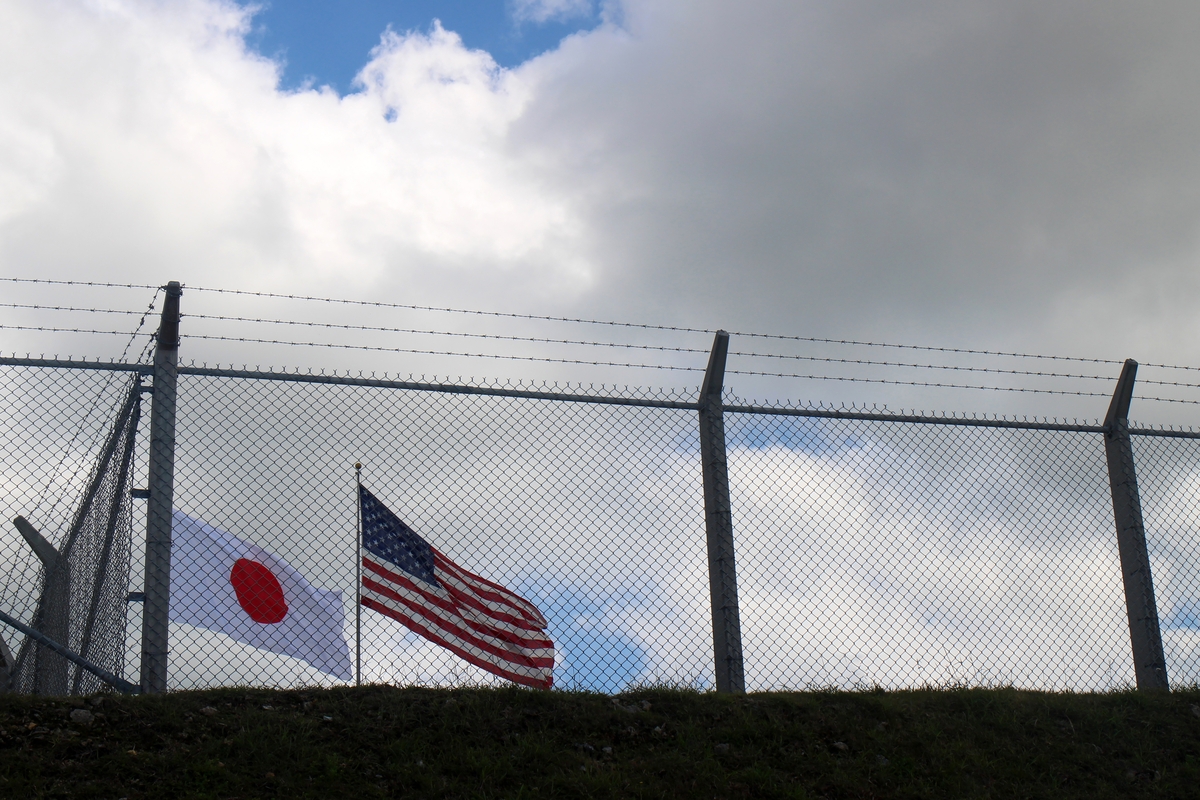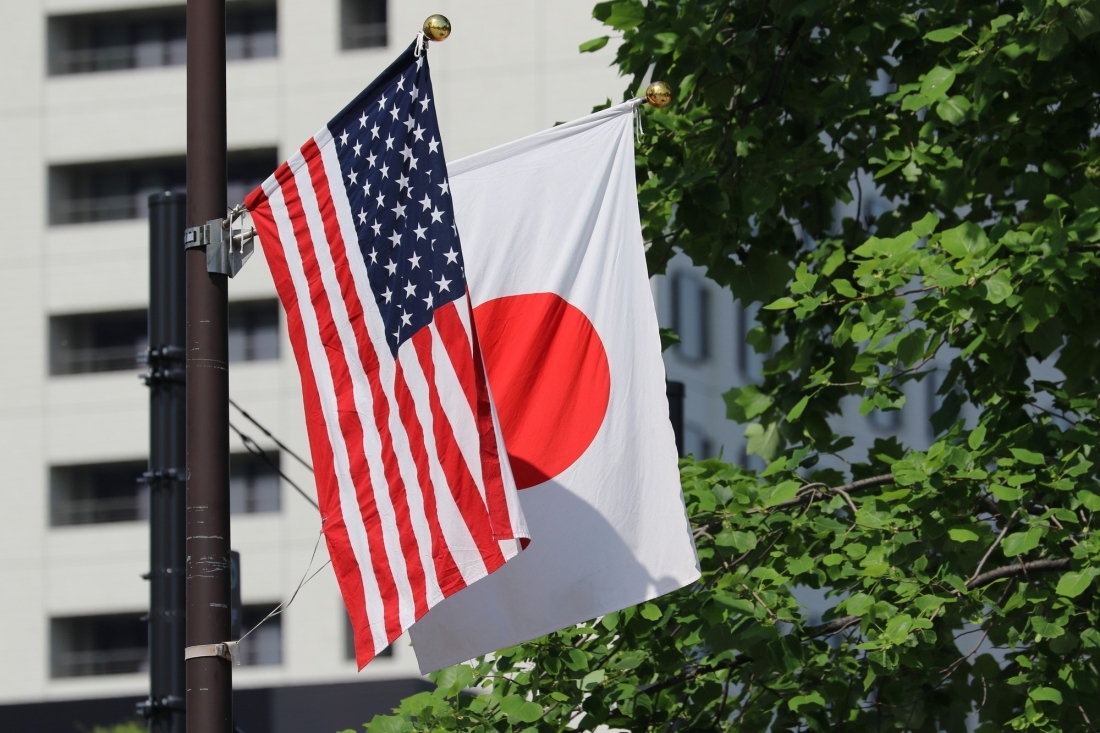POLICY
US-Japan Relations in the Trump 2.0 Era
March 25, 2025

The first weeks of the second Trump administration have made clear that the United States is no longer content to carry out business as usual. Washington is in the throes of a full-scale reorientation of its grand strategy, with deep implications for its allies, including Japan.
For decades, the U.S.-Japan alliance has stood as a cornerstone of the regional security architecture in the Indo-Pacific region. For Tokyo, reliance on the United States' conventional military might—backed by the country's nuclear deterrent—has been the fundamental building block of its own national security.
The tectonic geopolitical shifts being initiated by the Trump administration will demand a rethink in both capitals about the most prudent way forward. For Washington, allies are no longer necessarily seen as assets, but, in many cases, liabilities. President Trump's impulses on alliances were somewhat moderated during his first term by the more traditional advisors that found ways to stem his most destructive instincts; that is no longer the case in the Trump 2.0 era.
For American allies, including Japan, it makes sense to focus on the matters they can control. In the short-term, this means seeking to manage the United States as it continues its broader geopolitical reorientation while taking steps to improve self-sufficiency in matters of national defense. Fortunately, following the historic 2022 National Security Strategy issued by the Kishida government, Japan has already started down this path.
Fortunately, following the historic 2022 National Security Strategy issued by the Kishida government, Japan has already started down this path.
Tokyo's investments in new military hardware and upgrades to the software inherent in the U.S.-Japan alliance must continue. At the same time, Japan must prepare for a broader potential readjustment by the United States in the Indo-Pacific.
What remains uncertain, despite the great upheaval underway in Washington, is the extent to which the Trump administration will seek to broadly prioritize the Indo-Pacific and strategic competition with China. Within the White House and elsewhere within the U.S. government, these questions remain unsettled.
Two of Japan's key security concerns—China and North Korea—are likely to remain high on the agenda in Washington. While President Trump appears to be somewhat positively disposed toward authoritarian leaders, including President Xi Jinping in China and North Korean leader Kim Jong Un, the U.S. may chart divergent courses with these two countries.
The coming months will tell whether the Trump administration will convert its willingness to fundamentally renegotiate the terms of the United States' trans-Atlantic obligations to Europe to a renewed focus on competition with China in the Indo-Pacific. On the one hand, this impulse can be seen in public statements by many key officials currently in the administration; on the other hand, the “America First" impulse could lead to a broader retrenchment from Asia, leaving Japan potentially exposed to a Sino-centric order in the region.
For decades, the U.S.-Japan alliance has stood as a cornerstone of the regional security architecture in the Indo-Pacific region. For Tokyo, reliance on the United States' conventional military might—backed by the country's nuclear deterrent—has been the fundamental building block of its own national security.
The tectonic geopolitical shifts being initiated by the Trump administration will demand a rethink in both capitals about the most prudent way forward. For Washington, allies are no longer necessarily seen as assets, but, in many cases, liabilities. President Trump's impulses on alliances were somewhat moderated during his first term by the more traditional advisors that found ways to stem his most destructive instincts; that is no longer the case in the Trump 2.0 era.
For American allies, including Japan, it makes sense to focus on the matters they can control. In the short-term, this means seeking to manage the United States as it continues its broader geopolitical reorientation while taking steps to improve self-sufficiency in matters of national defense. Fortunately, following the historic 2022 National Security Strategy issued by the Kishida government, Japan has already started down this path.
Fortunately, following the historic 2022 National Security Strategy issued by the Kishida government, Japan has already started down this path.
Tokyo's investments in new military hardware and upgrades to the software inherent in the U.S.-Japan alliance must continue. At the same time, Japan must prepare for a broader potential readjustment by the United States in the Indo-Pacific.
What remains uncertain, despite the great upheaval underway in Washington, is the extent to which the Trump administration will seek to broadly prioritize the Indo-Pacific and strategic competition with China. Within the White House and elsewhere within the U.S. government, these questions remain unsettled.
Two of Japan's key security concerns—China and North Korea—are likely to remain high on the agenda in Washington. While President Trump appears to be somewhat positively disposed toward authoritarian leaders, including President Xi Jinping in China and North Korean leader Kim Jong Un, the U.S. may chart divergent courses with these two countries.
The coming months will tell whether the Trump administration will convert its willingness to fundamentally renegotiate the terms of the United States' trans-Atlantic obligations to Europe to a renewed focus on competition with China in the Indo-Pacific. On the one hand, this impulse can be seen in public statements by many key officials currently in the administration; on the other hand, the “America First" impulse could lead to a broader retrenchment from Asia, leaving Japan potentially exposed to a Sino-centric order in the region.



